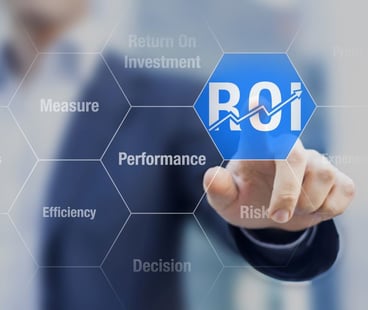A traditional means to justify the expense of purchasing new bonding equipment is to calculate the units per hour (UPH) of the proposed bonding system, along with the internal costs for direct and indirect labor to run the machines. When calculating labor costs, it is important to review what type of new solution is being purchased. In some cases, new equipment can introduce automation into the process, freeing up existing personnel that can be utilized elsewhere within the company. For example, one automated system can replace five manual systems, freeing up personnel to be utilized in other roles/tasks. Additionally automated equipment can be used 24/7 where multiple personnel would be needed to support this in a manual assembly operation.
If the process to manufacture the new product is the same as the previous product but the new equipment offers features with significant improvements to the production process, this can be measured and included in the justification. This could include a new epoxy system, which produces less waste and therefore saves on the cost of epoxy or a new method of threading a wire bonder, which is faster and more accurate. It could also include the introduction of a vision processing system/referencing technology that maximizes throughput by enabling part inspection both before and after bonding, thereby reducing waste and improving quality.
the production process, this can be measured and included in the justification. This could include a new epoxy system, which produces less waste and therefore saves on the cost of epoxy or a new method of threading a wire bonder, which is faster and more accurate. It could also include the introduction of a vision processing system/referencing technology that maximizes throughput by enabling part inspection both before and after bonding, thereby reducing waste and improving quality.
There could even be a completely different processing technique in the assembly of the product that can only be enabled with the new equipment. It could improve yield or throughput such as using bumping a process for a flip chip interconnection rather than wire bonding as the interconnection method. If the existing process only provides a 70% yield and automating the process can provide a 99% yield, then this alone could justify the purchase of the equipment over a few years. Accuracy and repeatability can be major contributors to yield loss in manual operations and automation eliminates these.
In the end, though, the justification will need to meet the overall company goals, whatever they may be: increased sales, increased revenue, reduced production times, increased market share, etc.
Calculating Yield: Traditional vs. First Time Yield
When calculating yield, the traditional calculation is often employed upon inspection of a process in order to measure the effectiveness of the process. While the traditional method of calculating yield might be simple, it is often misleading because it does not take into account the intricacies of the assembly and manufacturing process. Utilizing a calculation known as first time yield (FTY), the results for yield take into account these intricacies and results are calculated on not only inspection to validate the parts meet the requirements for the specification, but it includes rework from the process as well.
Consider the Indirect Benefits
While they are not as easy to quantify financially, including indirect or soft benefits into the cost justification can help to build a better case for management approval. Let us take operator ergonomics as an example. While initially, it may not traditionally be included in an ROI justification, significant improvements to the way a technician works with the machine should be reviewed for timesaving across the entire production process. Providing convenient, easy access to the internal components of the machine can mean significant reductions in set-up time.
Evaluating Elements of Capital Equipment ROI
Unfortunately, the cost of the actual bonding system is not the only capital expenditure cost that needs to be included. To provide an accurate ROI, it is important to include all the costs that will be incurred prior to when the proposed system actually begins performing production work as well as recurring maintenance/services costs. These costs can include the following:
Review the Total Costs for the Pay Back Period
A final input in calculating ROI is to review the payback period[i] or the number of years to recover the investment. Does the company have a policy stating a given number of years for an ROI on capital equipment? If so, how long is the die and wire bonding equipment expected to be used? By using the payback period, cash flow is calculated based on the cost of the investment. For some purchases or major assembly expansions, this may be the preferred method for calculating the ROI.
In the end, the justification for new die or wire bonding equipment needs to be clear, focused and precise enough for management to access the use of funds to make the purchase effective and beneficial to the company. It should include a written overview of the problem that it will solve, along with the actual costs and benefits to achieve a sound financial return on investment.
To learn more, read our article: Justifying the Purchase of Die or Wire Bonding Equipment.
----
Rebecca Janzon
Global Corporate Communications Director, Palomar Technologies
Steve Buerki
Sales Manager, Palomar Technologies
[i] https://www.canadaone.com/topics/money/purchasing-industrial-equipment-calculating-the-return-on-investment.html